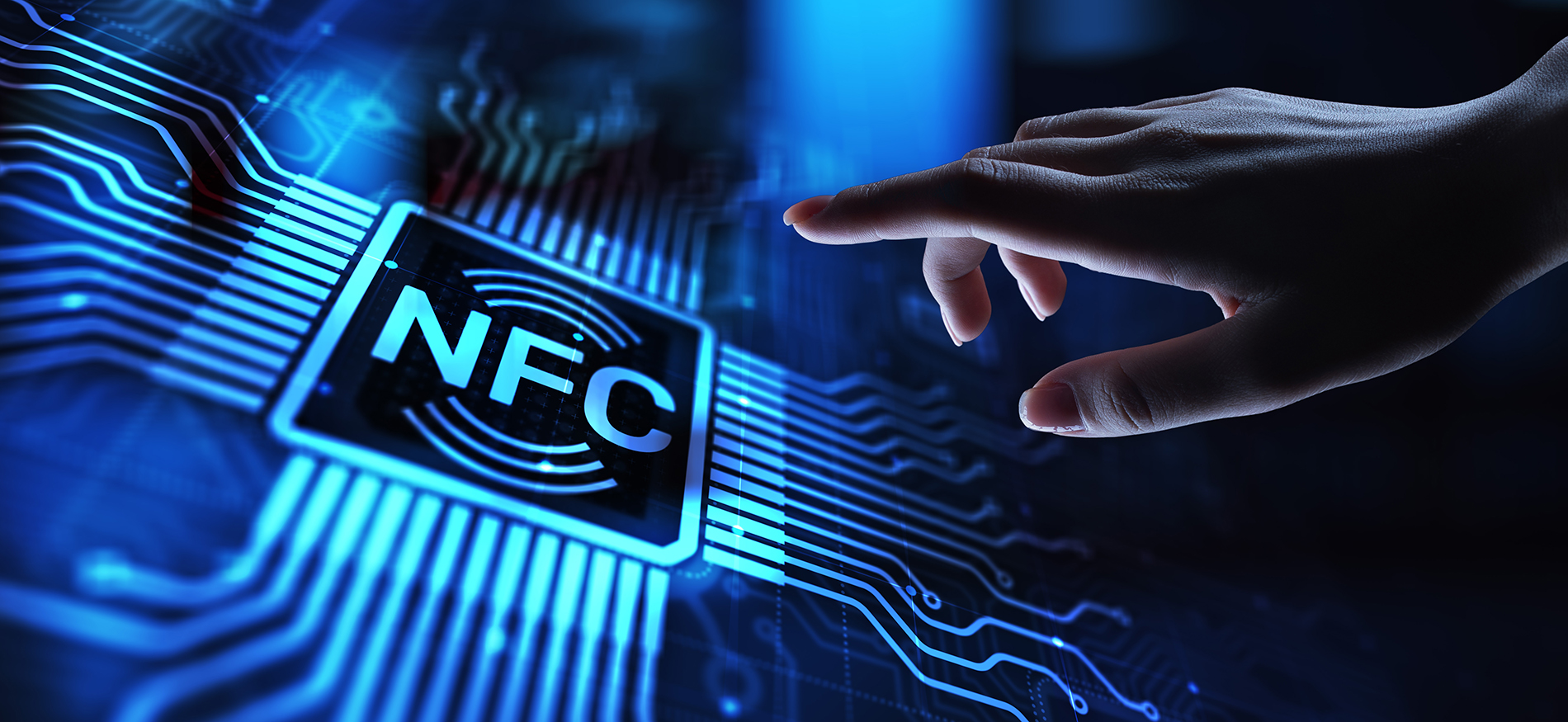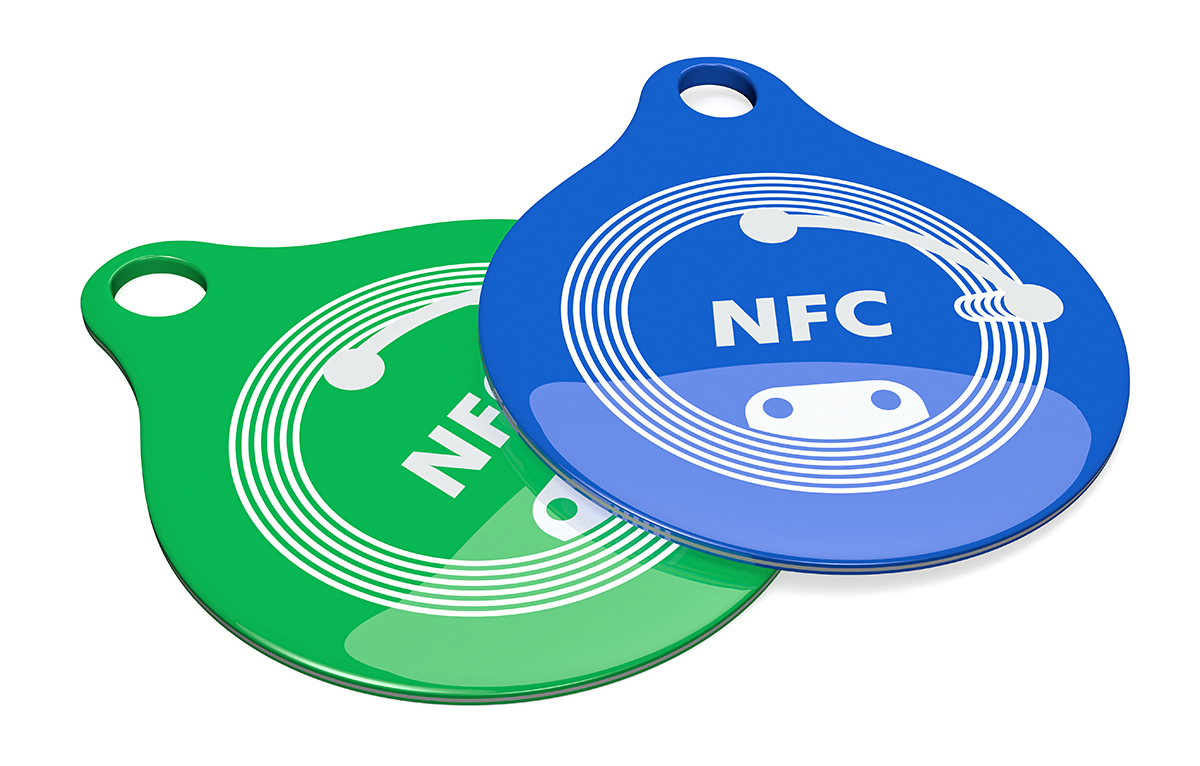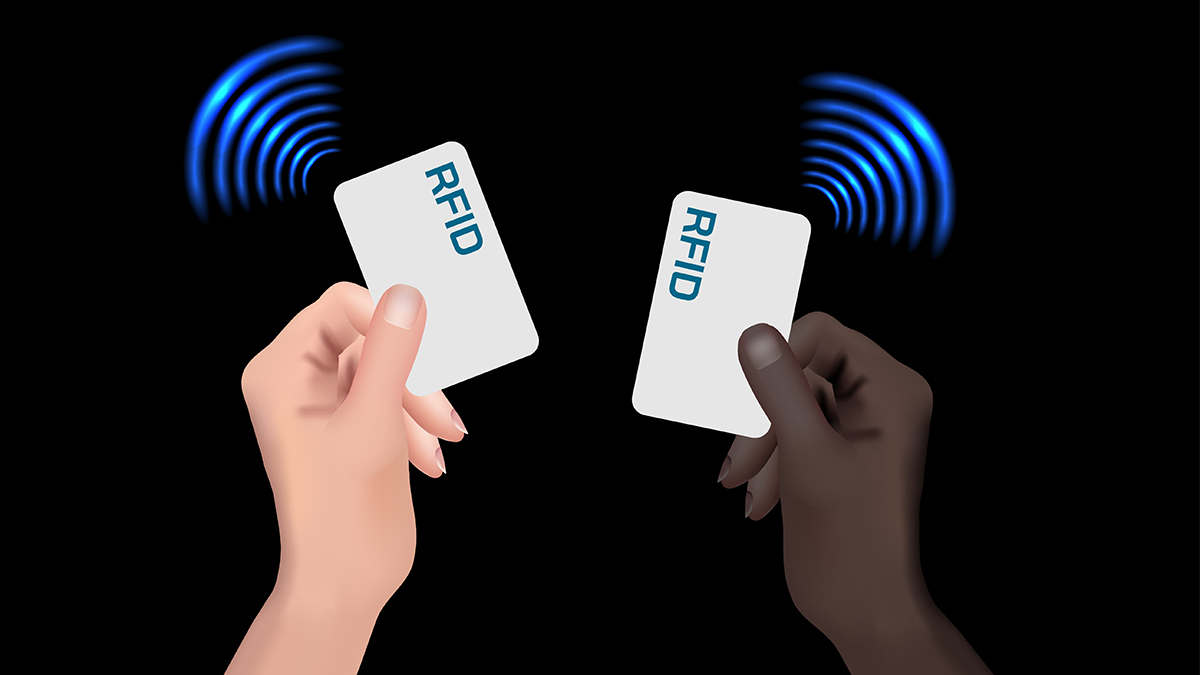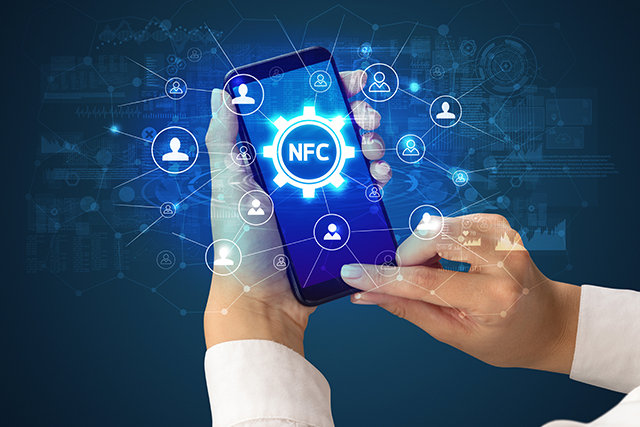What is near-field communication (NFC)?
When two devices are brought within a few centimeters of one another or touched together, near-field communication, or NFC, is a short-range wireless networking technology that employs magnetic field induction to permit communication between them. This involves launching more powerful wireless links, facilitating file transfers, granting physical access, and verifying credit card information. In general, it expands and strengthens the work of current radio frequency ID tag ecosystems and standards (RFID).

NFC adds more dynamic features made possible by contemporary cellphones to RFID and contactless capabilities. These days, NFC chips and apps like Apple Pay and Google Pay are supported by all phones to use the billions of RFID tags and terminals already in place. With NFC, loading several cards into a single phone for use in paying bills, accessing buildings, using public transportation, opening car doors, and other scenarios is made simpler. NFC enables interactive apps that are based on fundamental RFID features, such as Bluetooth headphone pairing, and Wi-Fi connectivity. A poster or advertisement can also immediately bring up information or an app.
Originally, Android Beam was supposed to be used for file transfers between phones. These days, NFC is used by services like Google Nearby Share to set up wireless services across speedier networks like Bluetooth or Wi-Fi Direct.
The short-range communication capability of NFC has significant consequences for the security of physical access. If a user wants to open a door or process a payment, they need to be within 3.5 inches (10 cm) of an NFC terminal. The fact that no power is needed for the fundamental functions of listening for and reacting to NFC requests is another crucial feature. This enables implementation in products like credit cards that don’t have batteries.

The security of physical access is significantly impacted by NFC’s short-range communication capabilities. A user must be within 3.5 inches (10 cm) of an NFC terminal to open a door or complete a payment. Another important characteristic is that the basic tasks of listening for and responding to NFC requests do not require any power. This makes it possible to include it in goods like battery-free credit cards.
How does NFC work?

To enable a variety of applications, NFC builds upon three key advances in wireless tag readers, cryptographic credit card processing, and peer-to-peer (P2P) networking.
The RFID collection of specifications and standards, including ISO/IEC 14443 and ISO/IEC 15963, is the foundation upon which NFC builds. Unlike conventional wireless radios, these make use of a wireless communication mechanism based on different physical principles. NFC uses magnetic field induction to transmit data, as opposed to radio wave propagation, which is how conventional radios do it. The frequency at which NFC data transfers is 13.56 MHz or a wavelength of 22 meters.
The fact that induction coupling fades out significantly faster than radio waves makes it a crucial method of data transmission instead of using radio waves. This helps keep others from listening in on private discussions regarding credit card transactions, door codes, and other private information.
The application of cryptography in credit card processing for contactless payments is the second major advance in NFC. With the use of public-key cryptography, the card can produce a unique authentication code for every transaction without disclosing the three-digit code or the card’s raw data. This makes sure that the original card details would never be discovered, even if someone were to listen in or a hacker asked about a card in a crowded train.
These two building elements were used by the nonprofit industry association NFC forum to enable P2P connection to the ISO/IEC 18092 standard. Conventional RFID and credit card use cases entail a one-way interaction between an active card reader and a passive tag or card. More competent gadgets, such as smartphones, headphones, routers, home appliances, and industrial equipment, may now initiate or respond to NFC queries according to specifications provided by the NFC forum. Numerous patterns of contact and connectivity were made possible by this. Reducing security flaws and streamlining information transmission also required a lot of work.
On top of this, smartphone companies are beginning to include some basic support for running applications. A smart tag within the Google ecosystem may cause a progressive web application to open in the browser. With Apple program Clips, which it unveiled recently, a QR code or NFC tag can activate apps with rudimentary features, such as ordering takeout or opening a rental scooter kiosk, without the need to download a full-fledged program. The phone’s sensitive data cannot be accessed by these apps.
Examples of NFC
A few examples of NFC use cases include the following:
-
- mobile payments, such as Apple Pay and Google Pay;
- transit card payments;
- ticket redemption at a concert or theater;
- access authentication for doors or offices;
- unlocking car doors or rental scooters;
- venue or location check-in to alert friends on social media;
- device pairing smartphones and headsets by tapping them together;
- automatic setup for Wi-Fi connectivity by tapping a phone to a router or internet gateway;
- connection via smartphone to a radiator to configure its temperature settings and schedule; and
- connection via smartphone or tablet to industrial equipment to access a more complex control panel.
Benefits of NFC
NFC has several real-world benefits, including the following:
-
- increases operational efficiency for payment processors;
- ensures more security than traditional credit cards for payments;
- allows users to choose from multiple cards dynamically;
- difficult to intercept NFC communications from a distance;
- ease of use for consumers in paying for goods;
- simplifies access to back-end information; and
- allows simple setup of new connections compared to other wireless protocols.
Limitations of NFC
Challenges of NFC technology include the following:
-
- very short range of only a few inches precludes many use cases;
- slower than other protocols;
- can limit usability for apps that require sensitive data on a smartphone;
- app innovation stymied by Apple and Google restrictions and tech implementations;
- not suitable for location tracking; and
- not as universal and easy to integrate into venue ticketing apps as QR codes.
Differences between NFC and other wireless technologies
NFC is a useful addition to other wireless technologies such as Bluetooth, UWB, RFID, EMV (Europay, Mastercard, and Visa), and QR codes. It also has significant distinctions from these technologies.
The best uses for NFC include door unlocking, transaction authentication, and setting up additional wireless connections. Some technologies function optimally in the following manners:
-
- RFID uses readers that can scan simple ID tags at long distances. Because it is unidirectional, this is best for reading toll tags, unlocking doors, authenticating passports, or scanning inventory between more active readers and more passive tags.
- EMV allows for credit card transactions using a chip and an equipped payment terminal. While it also authenticates transactions, it is not as dynamic and interactive as NFC, which allows for contactless payments.
- Bluetooth offers a greater connection range than NFC but is less secure. It works best for connecting peripherals, such as headphones, to mobile devices and computers.
- UWB is a new technology and operates at a very low power using pulse patterns to keep from interfering with other wireless technologies. This allows it to send data quickly without losing accuracy. UWB excels in short-range location tracking, which works well for newer use cases, such as wireless car entry.
- QR codes need to be activated by the user by scanning an image with a smartphone’s camera app, instead of a simple tap used by NFC. Businesses can easily generate QR codes for customers to retrieve promotions, product manuals, or webpages from printed tags. QR codes are less complex and are easier to include in emails without having to rely on integration with Apple or Google-specific functionality.
NFC can only detect whether two devices are near one another in terms of detection range. Bluetooth can detect when an object enters a room. A remote hidden between couch cushions can be found by UWB to within 10 cm. All three types of radios are available on the Apple AirTag for a range of connectivity, configuration, tracking, and notification patterns.




